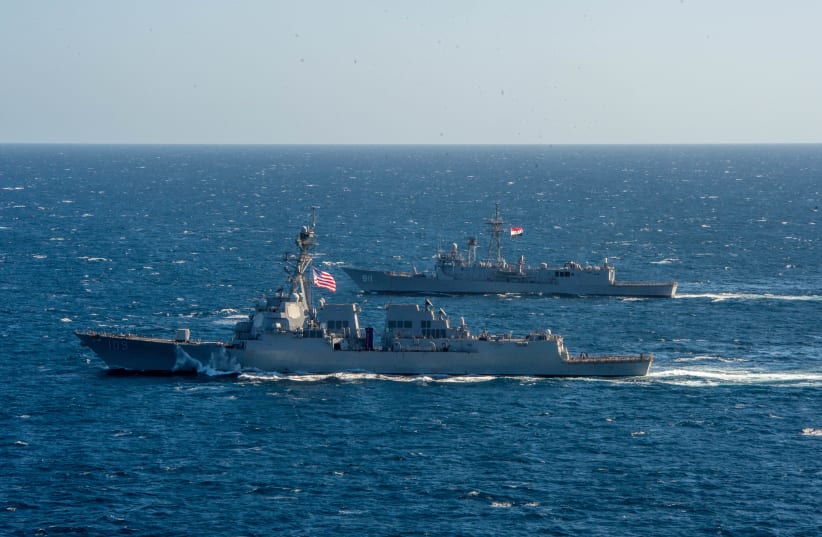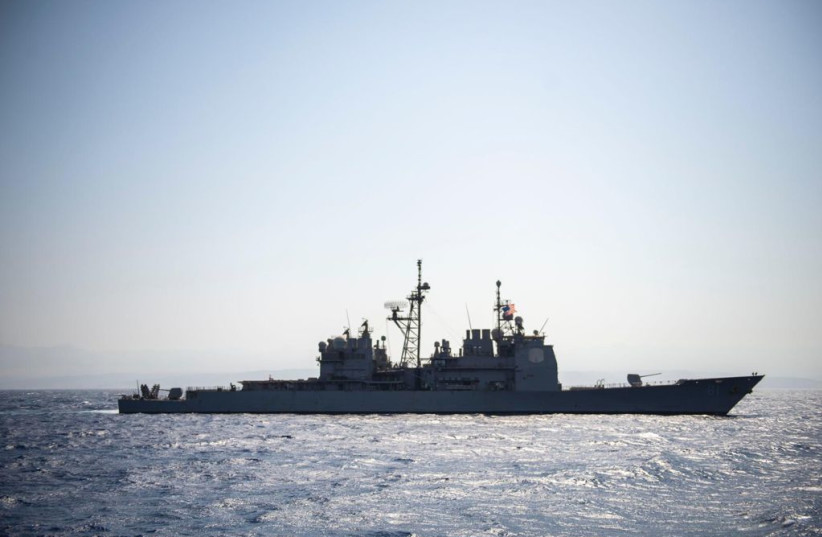The US 5th Fleet has been at the forefront of trying to introduce new technology, primarily unmanned surface vessels, over the last two years. The initiative was the subject of a new article at Bloomberg this week which served to shed light on this important effort.
The article gave an inside look at how the ideas the US has put into motion are progressing. “In an operations room at the Bahrain naval base packed with screens and computers, Captain Colin Corridan, commander of Task Force 59 which is responsible for deploying the new USVs, said a lot of the footage and information collected from the sea robots is synthesized by artificial intelligence to ease the burden on humans.
"The USVs are made by Canadian, Israeli and US companies, among others, and cost from $800,000 to $3 million. They range in size from slow-moving solar-powered buoys to large unmanned speed boats," the Bloomberg piece noted.
Last November, US Central Command announced some of these efforts. US 5th Fleet operates out of Bahrain and is a key naval component of the US Central Command, often called Navcent. “The three-week unmanned and artificial intelligence integration event Digital Horizon 2022 involves employing new platforms in the region for the first time,” Central Command noted in November.
At the time, the US put out a graphic showing all the new unmanned vessels that were being examined. “The three-week unmanned and artificial intelligence integration event, beginning November 23, will involve employing new platforms in the region for the first time,” the US said. The graphic showed one vessel that could sail for months called the Data Xplorer, and it showcased a Saildrone which looks like a windsurfing vehicle without a person; as well as something called the Devil Ray that can supposedly go 100 knots.
US 5th Fleet establishes Red Sea hub
Elbit Systems, an Israeli defense company, also contributed the SeaGull, a small patrol craft that doesn’t have a crew that can conduct mine hunting and surveillance missions. The Saildrone had actually been used before, closer to Israel, in the Gulf of Aqaba in 2021 as part of the same initiative.
At the time, Capt. Michael Brasseur, commander of Navent’s new task force for unmanned systems and artificial intelligence said that “these are exciting times for Task Force 59 as we team with the Royal Jordanian Navy to establish our hub for Red Sea operations in Aqaba and deploy some of our new maritime robotics.”
An article at Breaking Defense noted in March 2023 that “TF59’s strides in improved maritime domain awareness have been notable and should be praised. But they need to be viewed as a starting point, not the end-all. To move the issue forward, there are three challenges in the current framework that need to be addressed: First, a lack of technically-trained human capital; second, the absence of an organization-wide cultural shift towards digitized operations; and third, meager partner capacity and willingness.”
As these efforts get more attention there are also tensions in the region.
Iran used naval forces and IRGC units to stop and waylay two ships over the last week and a half. Iran tensions are one aspect of the current situation. Unmanned vehicles could help patrol vast areas of the ocean. They could ostensibly help monitor naval activity and perhaps confront threats. However, some of them are slow and could also be kidnapped by Iranian fast boats. Iran actually captured two sail drones in 2022, showing that some of these vessels may be vulnerable. If they are cheap and expendable that may not be an issue, which is one reason unmanned vessels, like flying drones, can be preferable in some regions.
Interest in maritime drones grows
The Bloomberg piece examined the growing interest in these vessels. It noted that the US wants to have 100 of these USVs in play and that the “an initial target of 50 was met in February and the technology delivers a cost-effective and efficient way of deepening US partnerships.” The article goes on to describe some of the activity. “At an outdoor hangar displaying some of the USV models, Lieutenant Commander Jorge Lens from the Spanish navy and a member of Corridan’s task force says some unmanned vessels can stay out for months without the need to refuel and resupply — the record is 220 days in the Red Sea.”
The focus on America’s pioneering efforts in the Persian Gulf is important because it raises some important questions about the future. First of all, there is a perception the US is shifting resources away from the region. For instance, while sometimes the US has one or two carrier strike groups in the region, one in the Mediterranean and one in the Gulf, sometimes there are no carriers in the region. This is due to China and Russia tensions.
In addition, Iran is continuing to harass ships. Iran uses drones and fast boats and helicopters. Iran also deploys air defense near the Gulf that can be used to shoot down US drones. Meanwhile, the US has sent A-10s to the region, a type of plane that can be used to take out tanks or infantry and can be armed now with standoff weapons like missiles.
US partners in the region are also investing in unmanned vessels. Israel’s IAI partnered with Edge in the UAE in 2021 to develop a USV. IAI also announced that it had developed Israel’s first unmanned submarine this week. The unmanned submarine is around 10 meters long and can operate for weeks at sea. It can also be transported in a container, making it versatile and easy to move by land, sea and air.
This is where unmanned vessels are unique. They are cheaper than large surface ships and can be deployed easily. As Western navies try to keep up with China, unmanned vessels are one way to keep up. Also, countries in the region that are interested in new technology may prefer them.

